If you are interested in scheduling a vacation in Mexico, or you already have, you may be wondering what you can do while on vacation. Millions of Americans schedule a Mexico vacation. In Mexico, there are an unlimited number of activities that you may find exciting. One of those activities may include scuba diving. 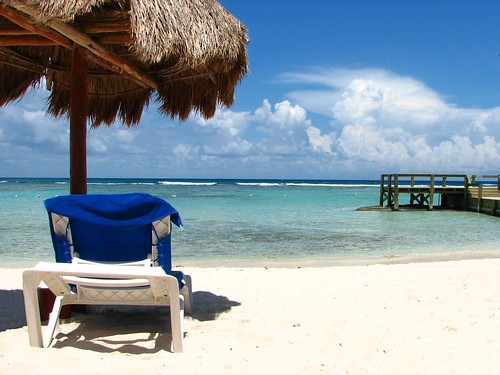
Photo: viviloob
There are many travelers who are misinformed. Many believe that you have to be an experienced diver to enjoy underwater diving in Maxico. This is simply not true. Before going scuba diving in the ocean, it is advised that you have basic knowledge of diving and strong swimming skills. However, you do not have to be an experienced diver.
When vacationing in Mexico, there are many individuals who go scuba diving for the first time. Scuba diving is a pretty self-explained activity. Scuba divers are featured in many movies and can be found in many amusement parks. While the general idea of scuba diving is the same in Mexico, what you will see underwater is not.
There are a number of underwater animals and plants that can only be seen in or around the Mexico area. This in itself is one of the many reasons why you should schedule a scuba diving adventure. In Mexico, scuba divers are often able to swim with the dolphins and sea turtles. To many, this alone is worth the cost of scuba diving. Aside from swimming with sea animals, you can also spend your scuba diving trip examining the life and environment underwater. Just a few of the many sea animals that you may see in Mexico include lobsters, eels, sting rays, and a large number of different kinds of fishes.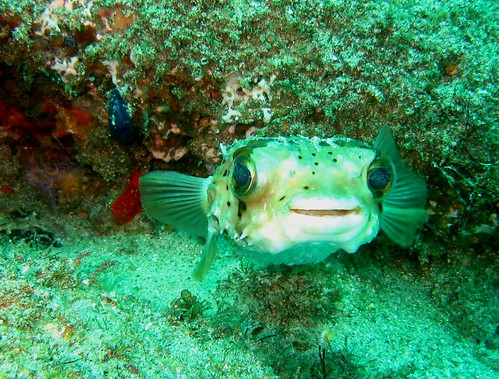
Photo: zoniedude1
The fishes found in underwater Mexico often include puffer fishes, spotted fishes, and parrot fishes. While the sea animals found underwater are the most exciting part of scuba diving, there are other underwater activities that you can participate in. Many scuba divers enjoy diving along coral reefs that are found along the coast of Mexico. Coral reefs are not only home to a large number of sea animals, but they also make for great adventures.
You may find it exciting traveling in, over, or around the many different sized reefs. Unless you are an experienced underwater diver, you are advised to go scuba diving with a trained professional. Scuba diving is a popular pastime in Mexico; therefore, you are encouraged to schedule your scuba diving adventures ahead of time. In addition to scheduling a scuba dive with a trained diver, you can learn how to scuba dive at a number of locations in Mexico. Many of these locations also offer guided tours.
Scuba diving lessons are offered as group lessons or private lessons. Private lessons may be more expensive, but many first time scuba divers find them rewarding, in more ways than one. Underworld Scuba operates scuba diving and snorkeling tours in the Manzanillo area of Mexico. It has been said that the Manzanillo area is one of the best places to go scuba diving in Mexico. Underworld Scuba, along with number other companies, state that the area is thriving with underwater life and adventures.
Photo: Mark Busse
Another popular scuba diving tour company is The Puerto Dive Team, which operates out of Oaxaco Mexico. They are most known for their private one-on-one underwater tours. To find other guided tours that are designed for scuba divers, you are encouraged to contact your local travel agent or do the research yourself.
Whether or not you have already selected your Mexico destination, you should easily be able to find nearby tours. The closer you are to the coast, the more tours you will have access to. What you can do and see underwater is absolutely amazing. It is likely what you see will stay with you for years to come.
Sunday, July 19, 2009
Vacation in Mexico by Scuba Diving
Labels: A puffer fish, Scuba Diving in Mexico, Vacation in Mexico
Posted by ThanateTan at 9:31 AM 0 comments
Saturday, July 11, 2009
Diving Trip in St. Thomas island
St Thomas island is the most developed and popular of the U.S. Virgin Islands. It offers lots of activities to keep you busy everyday of your trip. You can fly high on an aerial tour or go under the sea scuba diving, get pampered with massages or spend the day hiking in the Virgin Islands National Park. A large number of vacationers make the decision to vacation in this island each year. St. Thomas is located in the Virgin Islands. The underwater world in the Virgin Islands is stunning and truly amazing.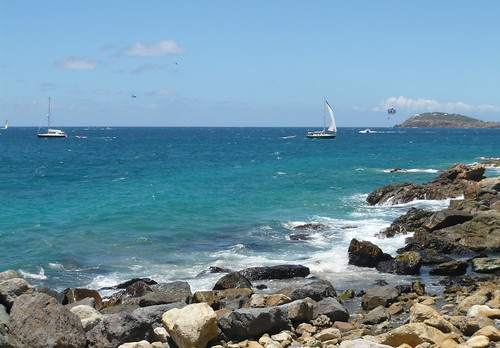
Photo: utfiero
A enticing blend of normal American life with a jaw-dropping setting leads many to choosing a St. Thomas vacation. This Caribbean island is one of the most popular summer vacation destinations in the world. Explore corals and gorgonian forest of sea fans and sea whips. Dive around caves, explore sunken boat wrecks or take a night dive and explore the fantastic world of nocturnal marine life. If you are interested in vacationing in St. Thomas, you may be wondering what fun and exciting activities await you.
You will likely find an unlined number of activities that will peak your internets. If you are looking for something that is exotic and educational all at the same time, you may want to consider scuba diving in St. Thomas. Swim among turtles, bright parrotfish, blue tangs, schools of fry and so much more. Due to its clear waters, corral reefs, and amazing sea life, St. Thomas is one of the best places in the world to go on a scuba diving adventure.
St. Thomas is well-known for its seclusion and beautiful beaches, but scuba diving is a popular underwater activity that brings in tourists from all around the world. If you are interested in scuba diving in St. Thomas, but you have never been before, you do not have to worry.
Photo: travelwizard.com
Scuba diving lessons are obtainable for individuals who want to scuba dive, but do not know how to. After a couple of lessons, you could easily be able to enjoying diving in the clear waters. Whether you consider yourself an experienced scuba diver or just a beginner, you are encouraged to scuba dive while on a guided tour. Scuba diving tours are given by trained and experienced professionals.
In addition to knowing where to look for the best underwater treasures, you will be safe. There are too many accidents that can happen in the open waters. That is why it is advised that you travel with an experienced diver and never go diving by yourself. Since it is advised that you go scuba diving with a trained professional, you will have to find a scuba diving guide or a company that offers tours.
In St. Thomas there are a number of places. When searching for scuba diving guides, you are encouraged to examine the type of tours that are available. You may find scuba diving tours right off the coast or tours that are hosted off of a boat. While searching for scuba diving tours in St. Thomas, it is likely that you will come across the Blue Island Divers. Blue Island Divers is one the most well-known and most recommended scuba diving groups in the St. Thomas area.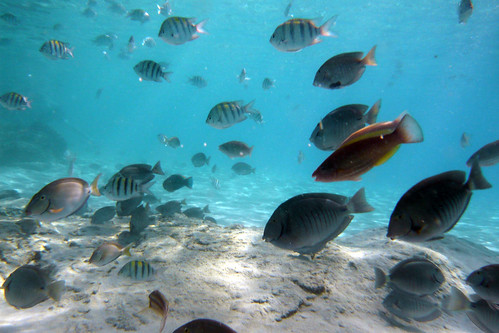
Photo: utfiero
In addition to providing their services to adults, scuba diving lessons and assistance can be given to children. Blue Island Divers offer dives that are focused on underwater wreckage and coral reefs. In addition to Blue Island Divers, it is likely that you may come across a company known as Admiralty Dive Center. The Admiralty Dive Center is a state of the art facility that offers a large number of scuba diving tours. These tours often involve exploring underwater wreckage and underwater sea life.
The best conditions for diving in the islands are found during the summer and fall months, with visibility generally between 60 and 100 feet. Some sites, particularly in Pillsbury Sound, can be explored all year round as they are protected from the wind and rough seas that can affect other more open sites during the winter months. St. Thomas and St. John are close enough to each other that they share many of the same dive sites in the Pillsbury Sound area including Carval Rock, Congo Cay, Grass Cay, Mounds at Mingo, Arches and Tunnels of Thatch and Lovango Cay.
As with the Blue Island Divers, scuba diving lessons and tours are available for individuals of all ages. As previously mentioned, there are a number of scuba diving tours that may be ideal for your next family vacation or romantic getaway. You can easily search for additional scuba diving tours by requesting a vacation brochure from the St. Thomas Island. Additional information may also be obtained through your local travel agent.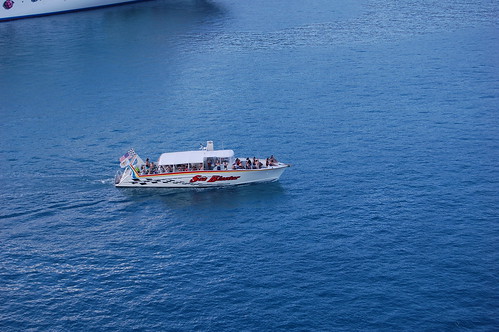
Photo: docpaula54
There are more than 40 moored dive sites around St. Thomas. Most are shallow dives and many only 15 to 20 minutes away from the shore/dock. Popular dive sites include Witchoal II, Navy Barges, Cow & Calf, Frenchman’s Cap, Ledges of Little St. James, Cartanza Senora and Buck Island Cove.
Sources: destination360.com, vinow.com
Labels: Admiralty Dive Center, Blue Island Divers, blue tangs, bright parrotfish, Carval Rock, Congo Cay, Grass Cay, Lovango Cay, Mounds at Mingo, St. Thomas island, U.S. Virgin Islands, underwater treasures
Posted by ThanateTan at 8:03 AM 0 comments
Wednesday, July 1, 2009
The Family of Seahorses and Pipefish
Did you have seen a Seahorse swimming away from you when you're diving near them? It so cute animal that I really likes. Seahorses are any species belonging to the genus Hippocampus, which, in turn, belongs to the family Syngnathidae, which also includes pipefish and leafy sea dragons. There are over 47 species of seahorse, mainly found in shallow tropical and temperate waters throughout the world. They prefer to live in sheltered areas such as sea grass beds, coral reefs, or mangroves.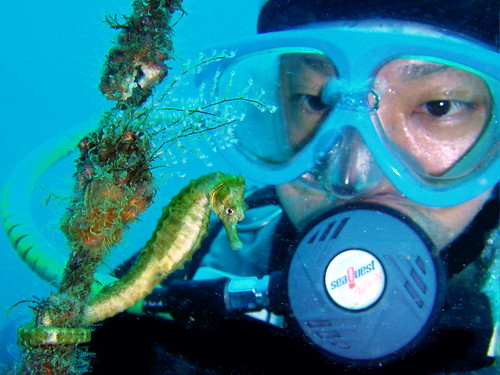
Photo: Nemo
Three different species of seahorse live in the Mediterranean Sea:
- Hippocampus hippocampus (long snout)
- Hippocampus brevirostris (short snout)
- Hippocampus fuscus (immigrated from the Red Sea)
Pipefish look like straight-bodied seahorses with tiny mouths. The name is derived from the peculiar form of their snout, which is like a long tube, ending in narrow and small mouth which opens upwards and is toothless. The body and tail are long, thin, and snake-like. They have a highly modified skeleton formed into armored plating. This dermal skeleton has several longitudinal ridges, so that a vertical section through the body looks angular, not round or oval as in the majority of other fishes.
Many Pipefish are very weak swimmers in open water, moving slowly by means of rapid movements of the dorsal fin. Some species of pipefish have tails that are prehensile as in seahorses. The majority of pipefishes have some form of a caudal fin which unlike seahorses, that can be used for locomotion.
Photo: getahugetank.com
These fish form territories, with males staying in about one square meter of their habitat while females range about one hundred times that area. They bob around in sea grass meadows, mangrove stands, and coral reefs where they are camouflaged by murky brown and grey patterns that blend into the sea grass backgrounds. During social moments or in unusual surroundings, seahorses turn bright colors.
Seahorses are rather inept swimmers and can easily die of exhaustion when caught in storm-roiled seas. They propel themselves by using a small fin on their back that flutters up to 35 times per second. Even smaller pectoral fins located near the back of the head are used for steering.
They anchor themselves with their prehensile tails to sea grasses and corals, using their elongated snouts to suck in plankton and small crustaceans that drift by. Voracious eaters, they graze continually and can consume 3,000 or more brine shrimp per day.
Photo: animals.nationalgeographic.com
Seahorses are so named for their equine profile. Although they are bony fish, they do not have scales, rather a thin skin stretched over a series of bony plates arranged in rings throughout their body. Each species has a distinct number of rings.
Seahorses swim upright, another characteristic that is not shared by their close pipefish relatives, which swim horizontally. Seahorses have a coronet on their head, which is distinct to each seahorse, much like a human fingerprint. They swim very poorly by using a dorsal fin, which they rapidly flutter to propel them, and pectoral fins, located behind their eyes, which they use to steer.
Seahorses have no caudal fin. As they are poor swimmers, they are most likely to be found resting in beds of sea grass or coral reefs, with their prehensile tails wound around a stationary object. They have long snouts, which they use to suck up food, and eyes that can move independently of each other, much like a chameleon. Seahorses eat small shrimp, tiny fish and plankton.
Photo: Felicia McCaulley
Seahorses typically mate for life. The male seahorse is equipped with a brood pouch on the ventral, or front-facing, side. When mating, the female seahorse deposits the eggs in the male's pouch, which the male then internally fertilizes. The male carries the eggs until they emerge, expelling fully-developed, miniature seahorses in the water.
Source: wikipedia.org, animals.nationalgeographic.com.
Labels: brevirostris, Hippocampus, Pipefish, Seahorses, Syngnathidae
Posted by ThanateTan at 3:26 AM 1 comments

